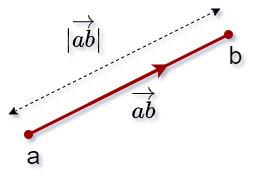If you have any question e-mail to nmbonjeni1@gmail.com.
Or phone on 0732437129.
Mr Mbonjeni.
In this lesson we shall investigate how to work with physical quantities called vectors that have both size and magnitude. This will help us to record and predict the position and motion of objects by means of graphs and equations.
Scalar- are physical quantities that have magnitude (size) only.
Vector- are physical quantities that have both magnitude and direction.
Vector example:
Analytically, a vector is represented by an arrow above the letter. And the value of the vector is always denoted by the mod

| Vector | Scalar | |
|---|---|---|
| Definition | A physical quantity with both the magnitude and direction. | A physical quantity with only magnitude. |
| Representation | A number (magnitude), direction using unit cap or arrow at the top and unit. | A number (magnitude) and Unit |
| Symbol | Quantity symbol in bold and an arrow sign above | Quantity symbol |
| Direction | Yes | No |
| Example | Velocity and Acceleration | Mass and Temperature |
Sketching vector diagram
Vectors are drawn as arrows. An arrow has both a magnitude (how long it is) and a direction (the direction in which it points). The starting point of a vector is known as the tail and the end point is known as the head.


There are many acceptable methods of writing vectors. As long as the vector has a magnitude and a direction, it is most likely acceptable. These different methods come from the different methods of representing a direction for a vector.
The simplest way to show direction is with relative directions: to the left, to the right, forward, backward, up and down.
Another common method of expressing directions is to use the points of a compass: North, South, East, and West. If a vector does not point exactly in one of the compass directions, then we use an angle. For example, we can have a vector pointing 4040°° North of West. Start with the vector pointing along the West direction (look at the dashed arrow below), then rotate the vector towards the north until there is a 4040°° angle between the vector and the West direction (the solid arrow below). The direction of this vector can also be described as: W 4040°° N (West 4040°° North); or N 5050°° W (North 5050°° West).

NOTE: Click on the link below to access more lessons on vectors and scalars.
https://www.mathtutordvd.com/public/Scalars_and_Vectors_in_Physics.cfm
Task 2:
Due Date: 23 September 2021
Marks: 25
Instructions: Read the questions carefully and answer the following questions.
Use the videos below to assist in your assessement.
Question 1
The following forces act at a point on a body: 2 N to the right,
4 N to the right, 3 N to the left, 1 N to the left. Find the resultant of the forces by drawing:
1. a scale vector diagram using the tail-to-haed method. (5)
2. a sketch vector diagram followed by calculations. (5)
Question 2
1. What is meant by the following terms
1.1 Physical quantity (2)
1.2 Equal vector (2)
1.3 Negative vector (2)
2. Classify the following quantities as vector or scalar:
2.1 Mass (2)
2.2 Weight (2)
2.3 Temperature (2)
Question 3
3. Draw tail-to-head sketch vector diagram to find the resultant of the following sets of forces:
3.1 F1 = 3 N and F2 = 4 N both act on an object torwards the right. (3)
TOTAL MARKS (25)
Step 1
Read through the introduction content on the Introduction Page to understand the VECTORS AND SCALARS concept.
Use the links to assist you with the assessement.
Step 2
Go to task page and read the instructions carefully. Read carefully.
Step 3
Go to evaluation page and see how your task will be evaluated.
Step 4
Answer all task questions.Once you have completed your task,submit it to nmbonjeni1@gmail.com
Step 5
Go to conclusion page.Read the content provided and click on the link provided which concludes the concept of Vectors and Scalars.
Note: You will be assessed according to the mark allocations in the task per question.
Outcomes of the lesson
You have learnt:
Scalar- are physical quantities that have magnitude (size) only.
Vector- are physical quantities that have both magnitude and direction
Sketching the vectors.
Properties of vectors.
The next lesson will be on POSITION, DISTANCE & DISPLACEMENT. You can use the following link to access the next class.
I give my thanks to Mr Moyo.
All the links given are aknowledged.